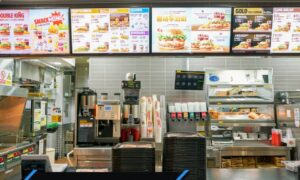 Opening a coffee shop can be extremely profitable if you do it right. Pass by any busy specialty coffee shop and it will likely be full of customers enjoying coffee, espresso, lattes, teas, and a variety of pastries and other goodies. Brandon Ivan Pena is a successful coffeepreneur. Brandon himself is too addicted to coffee. So, he owns a coffee farm named hacienda iluminada in Maricao, Puerto Rico, where they grow, process, and grind their coffee beans to create a product of exquisite flavour. These seeds are distributed in the three stores in San Juan DE Puerto Rico, 15 in New York City, and More under construction in the same city. The main reason for him as a successful coffee owner is his habit of systematizing the detailed and tested process to create the desirable and delicious means of coffee.
Opening a coffee shop can be extremely profitable if you do it right. Pass by any busy specialty coffee shop and it will likely be full of customers enjoying coffee, espresso, lattes, teas, and a variety of pastries and other goodies. Brandon Ivan Pena is a successful coffeepreneur. Brandon himself is too addicted to coffee. So, he owns a coffee farm named hacienda iluminada in Maricao, Puerto Rico, where they grow, process, and grind their coffee beans to create a product of exquisite flavour. These seeds are distributed in the three stores in San Juan DE Puerto Rico, 15 in New York City, and More under construction in the same city. The main reason for him as a successful coffee owner is his habit of systematizing the detailed and tested process to create the desirable and delicious means of coffee.
If you love coffee and are looking for a business opportunity, this is your gift guide from Brandon Ivan Pena to starting a coffee shop and making it a success.
1. Compare Your Coffee Shop Options
Starting your own business from the ground up requires the most effort, but it also offers the most flexibility and the best potential to maximize profits.
2. Find a Good Location With Reasonable Rent
Before opening a coffee shop, understand why they’re so popular. First of all, coffee shops are great places to socialize and meet up with friends, or to pass the time reading or surfing the web while enjoying a beverage and snack. Coffee shops are also a popular place for informal business meetings, or for students wanting to catch up on schoolwork.
3. Location vs. Rent
Note that the most central locations are not necessarily the best for your bottom line. Malls and other high-traffic locations typically have the highest rents and the most competition.
4. Vehicle Traffic and Parking
Unless you do locate in a mall or other site with lots of pedestrian traffic, you’ll need to think carefully about accessibility and parking. If a customer has to make a difficult turn off a busy street to get to your establishment or they have trouble finding available parking, they are likely to take their business elsewhere.
5. Consistently Serve a High-Quality Product
When opening a coffee shop, consider that gourmet coffee and tea drinkers want more than a mug of ordinary joe or a teabag in a foam cup. According to a study by the National Coffee Association of America, coffee beverages of the specialty variety overtook standard drip coffee in popularity in 2010 and have been on a steady rise ever since.
6. Provide Great Customer Service
Excellent customer service is crucial to any successful business, especially in the food service industry. Most successful coffee shops utilize counter service. Having customers order and pay up front and calling them when their drinks and snacks are ready minimizes your labor costs and enables you to better handle busy periods.
7. Create a Trendy, Relaxing Café Atmosphere
When opening a coffee shop, having the right atmosphere is key to attracting customers. Surveys have shown that most consumers cite comfort, familiarity, and overall atmosphere as the primary attractions for a café.
8. Offer a Variety of Snacks
Another key to success when planning how to start a coffee shop is to realize that, even though coffee and tea have a high markup, a coffee shop cannot survive on coffee sales alone. Most successful food service and retail establishments know to diversify their offerings.
9. Offer a Loyalty Program
Assuming you are serving a great product in a good location, having a customer loyalty program can really help you build clientele. Customers like to feel recognized, and occasional rewards incentivize them to return.
10. Watch the Numbers
As fun as it might be to focus on the coffee, the décor, and your clients, remember that to run a successful business, you have to keep a tight watch on operations and profits. When coffee shops fail, it’s overwhelmingly for financial reasons, such as overestimating profit, underestimating required cash flow, excessive overhead, lack of financial planning, poor debt management, and so on, and not because of bad coffee.


































